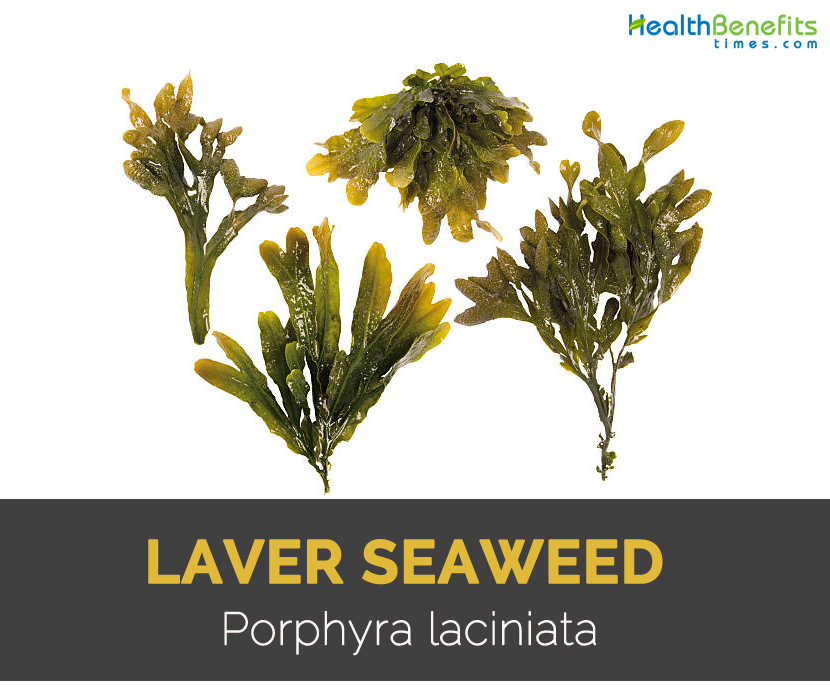Laver seaweed encompasses high content of dietary minerals such as iron and iodine. This seaweed has high content of iodine that provides distinctive flavor common with oysters and olives. Moreover, Laver seaweed is cultivated since 17th century as a food. Beforehand, it is washed repeatedly and boiled till it turns into a soft mush which is then known as Laver Seaweed. Resulted gelatinous paste can be sold as it is or rolled in oatmeal. Sometimes, it is coated with oatmeal preliminary to frying. Traditionally, it is served with bacon and cockles as a breakfast in Welsh.
Culinary uses
- In Wales, it is added to salads and an accompaniment to roasted meat.
- Use it as a breakfast with bacon dripping or cockles.
- Add this seaweed puree to oatmeal.
- Put the crumbled dried seaweed over an egg in a cup or lightly steamed carrots or on raw tomatoes.
- Use the seaweed as a popular wrapper for sushi or as a flavoring for soups and salads.
- The fried laver seaweeds are consumed as a snack with beer.
- In South, it is usually stir-fried and steamed.
- In North, it is added to pork dumplings.
Traditional Medicine Use of Laver
- Laver seaweed helps to improve health of sick miners with goiter.
- It consists of anti-cholerase which break down fatty deposits in the blood.
- In South Wales, it is believed that an intake of laver seaweed helps to lower the chances of breast cancer.
References:
https://www.eatweeds.co.uk/laver-porphyra
https://en.wikipedia.org/wiki/Laverbread
Comments
| Laver Seaweed Quick Facts | |
|---|---|
| Name: | Laver Seaweed |
| Scientific Name: | Porphyra laciniata |
| Origin | It is widely distributed from the Mediterranean to the North Sea. |
| Colors | Olive-green to purple-brown, or chocolate-black |
| Calories | 4 Kcal./cup |
| Major nutrients | Vitamin C (4.33%) Manganese (4.30%) Vitamin B9 (3.75%) Vitamin A (3.71%) Vitamin B2 (3.46%) |
| Name | Laver Seaweed |
|---|---|
| Scientific Name | Porphyra laciniata |
| Native | It is widely distributed from the Mediterranean to the North Sea. |
| Common/English Name | Laver |
| Habitat | Grows on rocks and stones usually on exposed sandy beaches. |
| Color | Olive-green to purple-brown, or chocolate-black |
| Size | 2 to 100 cm |
| Branches | Thin |
| Texture | Smooth, gelatinous and floppy |
| Major Nutritions | Vitamin C (Ascorbic acid) 3.9 mg (4.33%) Manganese, Mn 0.099 mg (4.30%) Vitamin B9 (Folate) 15 µg (3.75%) Vitamin A, RAE 26 µg (3.71%) Vitamin B2 (Riboflavin) 0.045 mg (3.46%) Copper, Cu 0.026 mg (2.89%) Iron, Fe 0.18 mg (2.25%) Valine 0.04 g (1.89%) Isoleucine 0.026 g (1.56%) Leucine 0.05 g (1.35%) |
| Calories in 2 tbsp (1/8 cup), 10 g | 4 Kcal. |



